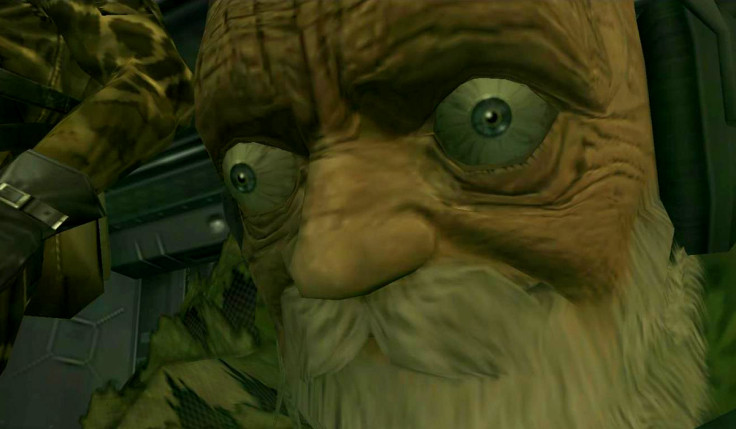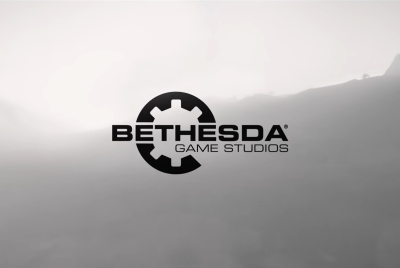Metal Gear Solid 3: Snake Eater - Survival and battling The End in Kojima's greatest MGS

Metal Gear Solid 2: Sons Of Liberty ends with an enormous flying fortress crashing into Manhattan and a sword fight atop Federal Hall between a former child-soldier and a former President of the United States who is also the third clone of a legendary soldier. It's probably for the best that its sequel was altogether more grounded.
Literally in fact. Most of Metal Gear Solid 3: Snake Eater is spent hugging the muddy ground, laying perfectly still and waiting for patrolling guards to walk idly by. Hideo Kojima's 2004 follow-up was an unexpected prequel set 33 years before the events of the first Solid game and which tells the story of Naked Snake, the operative who becomes Big Boss – the aforementioned legendary soldier and villain of the very first Metal Gear game.
After the industrial, corridor-filled worlds of Shadow Moses and Big Shell, the great outdoors brought an immediate and refreshing change to the stealth action series, and with it a few innovative new features. The camo system gives Snake a wide array of camouflaged outfits and face paints to wear which match various terrains and surfaces, improving a percentage in the corner of the screen and Snake's chances of slipping by unseen.
The jungle setting is also full of wildlife, with snakes, fish, birds, insects, crocodiles and more cohabiting this world with the game's cast. Snake's ever-dwindling stamina is recovered when Snake kills and eats these animals, or tranquilises and cages them to keep them fresher. Not everything will be to his taste however, and eating something rotten or poisonous will have grim consequences.
Where the camo feature accentuates the stealth of the series, the capturing and eating of wildlife introduces an element of survival. Snake's need to tend to his many wounds also adds to this. Over the course of the game he will pull dozens of bullets out of himself, reset every other bone in his body, tend to cuts, remove leeches and heal burns. Healing certain injuries requires items found in the environment, sometimes used in tandem – a broken bone will require a splint and a bandage for example. Leave wounds untended and Snake's stamina will drain faster.

For some this was all too fiddly, as each is handled in its own part of a menu, bringing players out of the game. Having to enter menus to eat meals and tend to injuries certainly does inhibit flow, but it is meant to. Snake Eater operates at a deliberately slower and more thoughtful pace than the games before it, slowly escalating as the game reaches its climax.
Using a knife to dig a bullet out of Snake's leg shouldn't be something requiring a single button press, it should feel like managing Snake's own body and health to keep him in fine fiddle to press on. The result being a constant awareness of Snake's health beyond what the health bar indicates.
Each of these systems is designed to make Snake Eater feel more realistic than what came before it, and to bring players closer to the tragic tale of Big Boss. The events of the game set this battle-scarred soldier along a path which continued in PSP follow-up Peace Walker and will continue again in September's Metal Gear Solid 5: The Phantom Pain. When we witness the character's descent into a personal hell, we'll remember the struggle, the horrible meals, the torture he endured during the first mission we shared with him.
If there's a single event that best brings together all that Snake Eater does so well, which other games in the series have not or can not, it is the sniper battle against The End. An enduring boss battle for the ages.
Metal Gear Solid's most famed boss battle is against the memory card-reading Psycho Mantis, and it relied on gimmicks. Brilliant gimmicks for sure, but gimmicks nonetheless. Where that fight was a showcase of a developer's unique moments of brilliance, Snake's battle against The End is built entirely around the game's established systems.
The End is the world's greatest sniper with a photosynthetic body which allows him to stay in prone positions for weeks on end. The fight against him takes place across three areas and can last as little as twenty minutes or as much – should you want it to – as a whole week.
After a cutscene sets things up, the player is thrown into a wide open space with no idea where their foe lies. How the player goes about hunting The End down is up to them – but however they do it, keeping hidden and constantly aware of your wild surroundings is of key importance.
The End's rifle produces a lens flare which alerts the player to his position, but seeing it means he's got his sights set on you. Snake's thermal goggles (if you found them earlier in the game) will allow him to follow The End's footsteps, but he will follow yours as well. Another gadget, the AP sensor, will alert the player to his nearby presence, as will his breathing and tendency to nod off. Another method is to find The End's pet parrot. Kill it and he will lose his spotter, making things much harder for him, but tranquillise it and you'll be able to set it free - which in turn will guide players to the sniper's location.
Most players will hunt him down and use the pistol at close range, but of course there's always the option of taking him on at his own game - sniper against sniper - finding a position, scouting for his location, remaining hidden, moving slowly and biding your time. Landing even one hit on The End like this is a particular thrill in a game - and series - full of them.
In a pair of classic Kojima moves players can even avoid the fight altogether if they use a sniper rifle to kill The End when he's first seen following a cutscene outside the nearby Ponizovje warehouse. Waiting a week (or setting the console's system clock forward) also results in The End dying of old age and Snake winning by default.

Metal Gear Solid 2 was itself a comment on sequels and Hideo Kojima's own uncertainty about having to make one (a notion explained more fully in this excellent Eurogamer article). His second sequel is more self-assured, and sees Kojima tackling the issue of repeating what made that first game a classic not through post-modernism but through adding to the established formula to make something familiar but also quite unique.
Snake Eater remains distinctive to this day. It's a survival game like few others upon which Kojima told his most powerful story to date, and it offers up so much more than the tense and brilliant boss battle which best surmises what it does so well.
No two Metal Gear Solid games have been alike, at least in the way of conventional sequels, and that is why the series has endured for so long. It's sad to know that there won't be a game like Snake Eater again, but it's exciting to think of whole new ways Kojima can delight us in The Phantom Pain.
For all the latest video game news follow us on Twitter @IBTGamesUK.
© Copyright IBTimes 2025. All rights reserved.




















